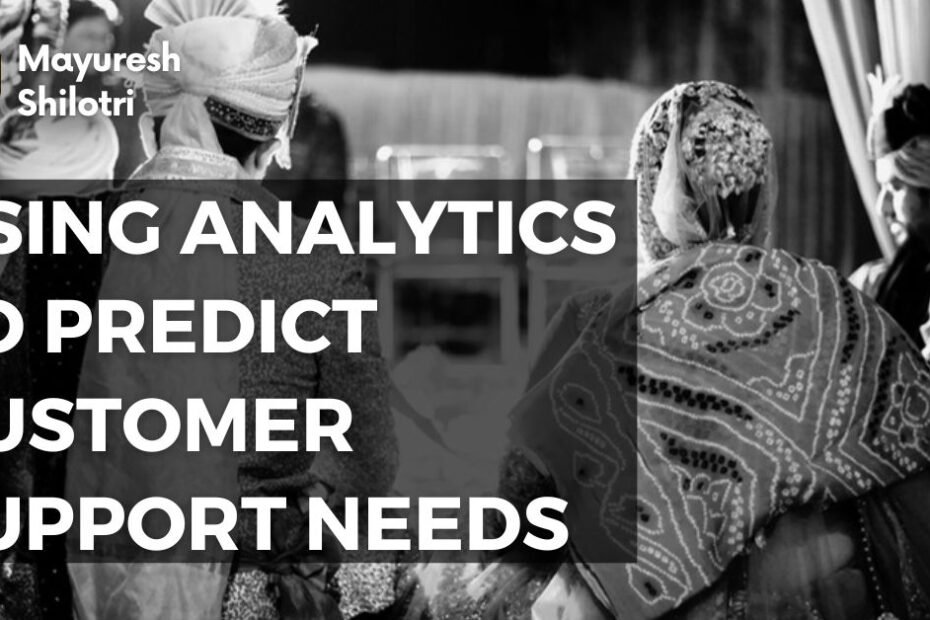In the rapidly evolving landscape of customer service, the ability to predict customer support needs has emerged as a critical competency for businesses aiming to enhance customer satisfaction and loyalty. The traditional reactive approach to customer support, where issues are addressed only after they arise, is increasingly being supplanted by proactive strategies that leverage data analytics and predictive modeling. This shift is not merely a trend; it reflects a fundamental change in how organizations view their relationship with customers.
By anticipating customer needs and potential issues, companies can create a more seamless and satisfying experience, ultimately leading to improved retention rates and brand loyalty. The advent of digital communication channels has transformed customer interactions, generating vast amounts of data that can be harnessed to predict support needs. From social media interactions to chat logs and purchase histories, every touchpoint provides valuable insights into customer behavior and preferences.
As businesses strive to stay competitive, the ability to analyze this data effectively becomes paramount. Organizations that invest in predictive analytics not only enhance their operational efficiency but also position themselves as leaders in customer experience management. This article delves into the various facets of customer support needs prediction, exploring the importance of analytics, data collection methods, predictive modeling, and the integration of advanced technologies like machine learning and artificial intelligence.
Key Takeaways
- Customer support needs prediction helps in anticipating and addressing customer issues before they arise.
- Analytics plays a crucial role in understanding customer behavior and preferences for effective support.
- Collecting and analyzing customer data is essential for gaining insights into their needs and expectations.
- Predictive models can be used to anticipate and proactively address potential customer issues.
- Key metrics such as customer satisfaction, response time, and resolution rate are important for customer support prediction.
Understanding the Importance of Analytics in Customer Support
Analytics plays a pivotal role in modern customer support strategies, serving as the backbone for informed decision-making and strategic planning. By employing analytics, organizations can gain a comprehensive understanding of customer behavior patterns, preferences, and pain points. This understanding allows businesses to tailor their support services to meet the specific needs of their customers, thereby enhancing overall satisfaction.
For instance, companies can analyze historical data to identify common issues faced by customers and develop targeted solutions that address these challenges proactively. Moreover, analytics enables organizations to measure the effectiveness of their support initiatives. By tracking key performance indicators (KPIs) such as response times, resolution rates, and customer satisfaction scores, businesses can assess the impact of their strategies and make data-driven adjustments as needed.
This continuous feedback loop fosters a culture of improvement and innovation within customer support teams. As a result, organizations that leverage analytics are better equipped to respond to changing customer expectations and market dynamics, ensuring they remain relevant in an increasingly competitive landscape.
Collecting and Analyzing Customer Data
The foundation of effective customer support needs prediction lies in the systematic collection and analysis of customer data. Organizations must implement robust data collection mechanisms that capture a wide array of information from various sources. This includes direct interactions with customers through support tickets, live chats, and phone calls, as well as indirect data from social media platforms, online reviews, and website analytics.
By aggregating this data into a centralized repository, businesses can create a comprehensive view of each customer’s journey. Once the data is collected, the next step involves rigorous analysis to extract meaningful insights. Advanced analytical techniques such as sentiment analysis can be employed to gauge customer emotions based on their interactions with support teams.
Additionally, clustering algorithms can identify distinct customer segments based on behavior patterns, allowing organizations to tailor their support strategies accordingly. For example, a telecommunications company might discover that younger customers prefer digital communication channels while older customers favor phone support. By understanding these preferences, businesses can allocate resources more effectively and enhance the overall customer experience.
Utilizing Predictive Models to Anticipate Customer Issues
Predictive modeling is a powerful tool that enables organizations to forecast potential customer issues before they escalate into significant problems. By employing statistical techniques and machine learning algorithms, businesses can analyze historical data to identify trends and patterns that signal impending support needs. For instance, if a particular product consistently generates a high volume of support tickets shortly after purchase, predictive models can alert support teams to proactively reach out to customers who have recently made similar purchases.
These models can also incorporate external factors such as seasonal trends or market changes that may influence customer behavior. For example, during holiday seasons, retailers may experience an uptick in inquiries related to shipping delays or product availability. By anticipating these issues through predictive modeling, organizations can allocate additional resources to their support teams during peak periods, ensuring that customers receive timely assistance.
This proactive approach not only enhances customer satisfaction but also reduces the strain on support staff during high-demand times.
Identifying Key Metrics for Customer Support Prediction
To effectively predict customer support needs, organizations must identify and monitor key metrics that provide insights into customer behavior and satisfaction levels. These metrics serve as indicators of potential issues and help guide decision-making processes within support teams. Commonly used metrics include first response time, average resolution time, ticket volume trends, and customer satisfaction scores (CSAT).
Each of these metrics offers valuable information about the efficiency and effectiveness of support operations. For instance, a sudden spike in ticket volume may indicate an underlying issue with a product or service that requires immediate attention. By closely monitoring this metric alongside resolution times, organizations can assess whether their support teams are adequately equipped to handle increased demand.
Additionally, tracking CSAT scores over time can reveal trends in customer satisfaction that may correlate with specific changes in products or services. By analyzing these metrics collectively, businesses can develop a more nuanced understanding of their customers’ needs and proactively address potential concerns before they escalate.
Implementing Real-time Monitoring and Alert Systems
Incorporating real-time monitoring and alert systems into customer support operations is essential for timely intervention when issues arise. These systems enable organizations to track key metrics continuously and receive instant notifications when predefined thresholds are met or exceeded. For example, if the average response time for support tickets exceeds a certain limit, an alert can be triggered to notify team leaders so they can investigate the cause and take corrective action.
Real-time monitoring also allows businesses to identify emerging trends in customer inquiries or complaints as they happen. For instance, if multiple customers report similar issues with a new software update within a short timeframe, support teams can quickly mobilize resources to address the problem before it affects a larger segment of the customer base. This proactive approach not only mitigates potential dissatisfaction but also demonstrates to customers that their concerns are being taken seriously.
Integrating Machine Learning and AI for Enhanced Predictive Capabilities
The integration of machine learning (ML) and artificial intelligence (AI) into customer support prediction processes represents a significant advancement in how organizations manage customer interactions. These technologies enable businesses to analyze vast amounts of data at unprecedented speeds, uncovering insights that would be impossible to detect through manual analysis alone. Machine learning algorithms can learn from historical data patterns and continuously improve their predictive accuracy over time.
For example, AI-powered chatbots can analyze previous interactions with customers to provide personalized responses based on individual preferences and past behaviors. This not only enhances the efficiency of support operations but also creates a more engaging experience for customers. Additionally, machine learning models can identify anomalies in customer behavior that may indicate potential churn risks or dissatisfaction.
By flagging these customers for proactive outreach by support teams, organizations can take steps to retain valuable clients before they decide to leave.
Improving Customer Experience through Proactive Support
Proactive support is at the heart of effective customer service strategies aimed at enhancing overall customer experience. By anticipating issues before they arise and addressing them proactively, organizations can create a more positive interaction for customers. This approach not only reduces frustration but also fosters a sense of trust between customers and the brand.
For instance, if a company identifies that certain products frequently require assistance shortly after purchase, they might implement follow-up communications offering tips or resources for troubleshooting. Moreover, proactive support extends beyond merely addressing issues; it involves actively engaging with customers throughout their journey. For example, sending personalized recommendations based on previous purchases or usage patterns can enhance the overall experience by making customers feel valued and understood.
This level of engagement not only improves satisfaction but also encourages repeat business and brand loyalty.
Case Studies and Examples of Successful Customer Support Prediction
Numerous organizations have successfully implemented predictive analytics in their customer support operations, yielding impressive results in terms of efficiency and customer satisfaction. One notable example is Zappos, an online shoe retailer known for its exceptional customer service. Zappos utilizes advanced analytics to monitor customer interactions across various channels continuously.
By analyzing this data in real-time, they can identify trends in inquiries related to specific products or services and proactively address potential issues before they escalate. Another compelling case is that of Netflix, which employs sophisticated algorithms to predict viewer preferences based on historical viewing data. By understanding what content resonates with different segments of its audience, Netflix not only enhances user experience but also reduces churn rates significantly.
Their proactive approach ensures that users receive personalized recommendations tailored to their tastes, ultimately leading to higher engagement levels.
Challenges and Limitations of Using Analytics for Customer Support Prediction
Despite the numerous benefits associated with predictive analytics in customer support, several challenges and limitations must be acknowledged. One significant hurdle is the quality of data collected; inaccurate or incomplete data can lead to misleading insights and ineffective predictions. Organizations must invest in robust data governance practices to ensure that the information used for analysis is reliable and up-to-date.
Additionally, there is often resistance within organizations when it comes to adopting new technologies or changing established processes. Employees may be hesitant to embrace predictive analytics due to concerns about job security or the complexity of new systems. To overcome this challenge, businesses must foster a culture of innovation where employees are encouraged to engage with new tools and understand their value in enhancing customer service.
Best Practices for Implementing Analytics in Customer Support Prediction
To maximize the effectiveness of analytics in predicting customer support needs, organizations should adhere to several best practices. First and foremost is establishing clear objectives for what they aim to achieve through predictive analytics—whether it’s reducing response times or improving overall satisfaction scores. Setting measurable goals allows teams to track progress effectively.
Secondly, investing in training programs for staff is crucial; employees should be equipped with the skills necessary to interpret data insights meaningfully. This empowers them to make informed decisions based on analytics rather than relying solely on intuition or experience. Lastly, fostering collaboration between departments—such as marketing, sales, and IT—can enhance the effectiveness of predictive analytics initiatives by ensuring that insights are shared across functions and integrated into broader business strategies.
By following these best practices, organizations can harness the power of analytics effectively while navigating the complexities associated with implementing predictive models in their customer support operations.
In a recent newsletter from Shilotri, the article “Are You an Organized Person?” discusses the importance of organization in both personal and professional life. This article complements the topic of using analytics to predict customer support needs by highlighting the role of organization in improving efficiency and productivity. To read more about this insightful perspective, check out the article here.





